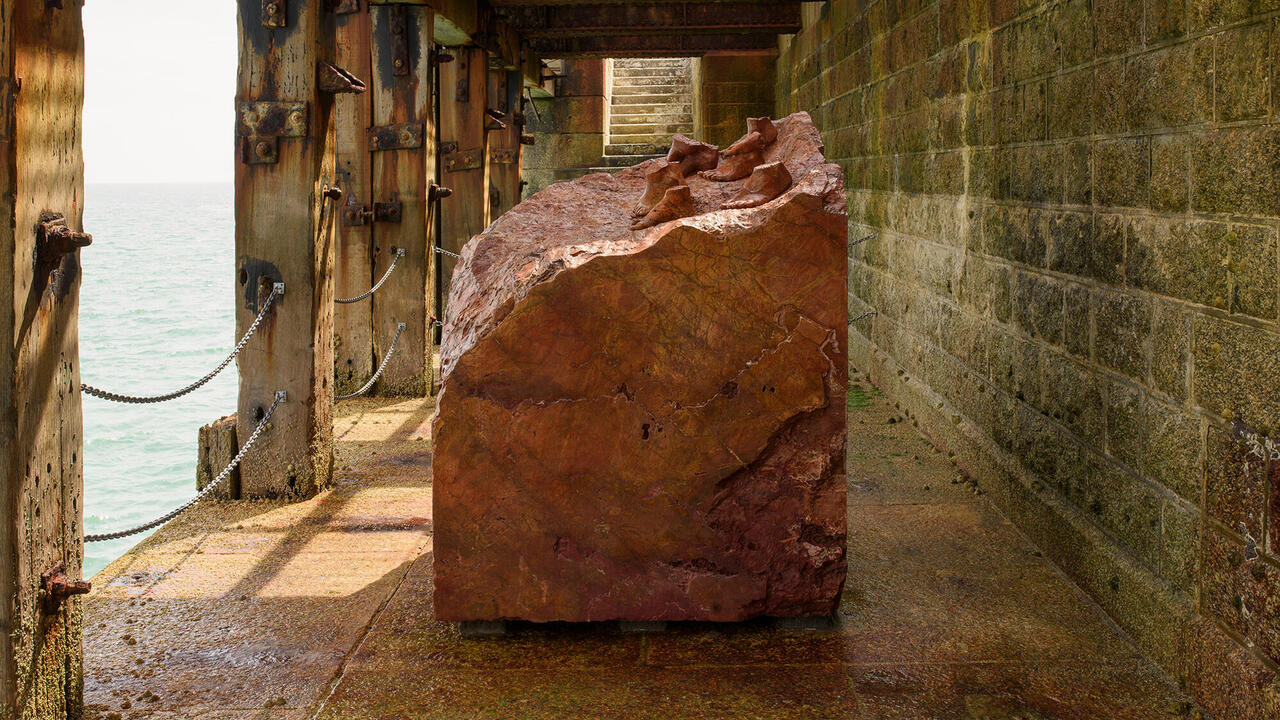Heidrun Holzfeind
Badischer Kunstverein Karlsruhe
Badischer Kunstverein Karlsruhe

The works of Heidrun Holzfeind have a persistent thematic focus. In each of her projects – CORVIALE, il serpentone (2001), Za Zelazna Brama (Behind the Iron Gate) (2009), Colonnade Park (2011) – the Austrian artist sizes up works of modernist architecture in relation to their utopian promises. forms in relation to life, Holzfeind’s solo show at Badischer Kunstverein, explored the famous Vienna Werkbundsiedlung of 1932 and served as an in-depth continuation of this theme.
At the exhibition’s core was an eponymous video from 2014 showing footage of the housing project. As in most of her documentary videos, Holzfeind takes a back seat, leaving commentary to the residents who talk about themselves but also about the houses. Their views range from affirmative to negative. Amidst calm, matter-of-fact footage of the housing project, a retired architect discusses the merits of the architecture and complains about neighbours who denigrate their design with aluminium windows and garden gnomes. In a touching moment, he slips out of his professional role and explains how difficult it was to carry his dead wife down the narrow stairwell: ‘In the Werkbund project, you don’t carry out coffins’. Other residents criticise the operator’s failure to ensure a viable compromise between conservation and ease of living. Holzfeind returns time and again to this tension between architectural heritage and the needs of residents, as when an older woman blames the failure of her parents’ marriage on the cramped conditions of their Hoffmann house. Another woman explains how she is relieved by the limited storage space in her Adolf Loos house because it forces her to curtail the number of things she owns. Thus, in the course of the film, a layered oral history of the housing project is created.
The 60-minute video ends with a portrait of Elfriede Mislik, who for decades worked with other residents to make costumes for amateur and children’s theatre productions. In the final sequence, local children dressed in costumes from Mislik’s archive (donkey, bird of paradise, dog, polar bear, frog) invade the streets shaking rattles. Here, Holzfeind’s realistic portrayal takes a fantastic turn. The utopian hopes of New Building (‘Neues Bauen’) are both fulfilled and gleefully subverted.
This anarchic moment, in which the Werkbund housing project is carnivalized and made to play a supporting role, was featured elsewhere in the show as a separate video (costume parade, 2014). Other elements (installation, photography, sculpture) also referred to this central passage: twelve photographs in the series animals (fashion book) (2013), portraits of the costumed children. The costumes sewn by Mislik that feature in the film hung on a clothes rail, and it was unclear whether they had been laid aside for good or if they would be reactivated. Do they stand for functioning coexistence in the housing project, or are they relics for its demise?
costume parade suggests that Holzfeind develops her approach to the interrelation between rigid conceptual forms and less hard-lined realities of life from the perspective of the child. This makes sense, especially since educational theorists have often described children as ‘malleable’. This conflict is especially apparent in Hausbaukasten (House building kit, 2015), a group of sculptures made of plywood. On the one hand, they form rudimentary house shapes, celebrating a geometry of the square similar to that of the Gerrit Rietveld apartments in the house project. But ‘Hausbaukasten’ is also the name of a historical toy from the 1920s. Here, the relationship between built form and malleable humans becomes impossibly blurred, and it is clear that Holzfeind does not attempt to give a conclusive answer to the question of the legacy of modern architecture. In doing so, she foregrounds above all the uniformity and incompleteness of usual narratives about the New Building.
Translated by Nicholas Grindell
















